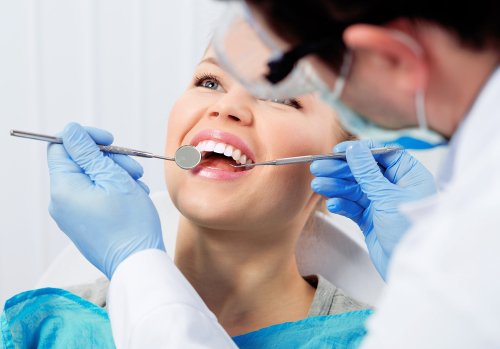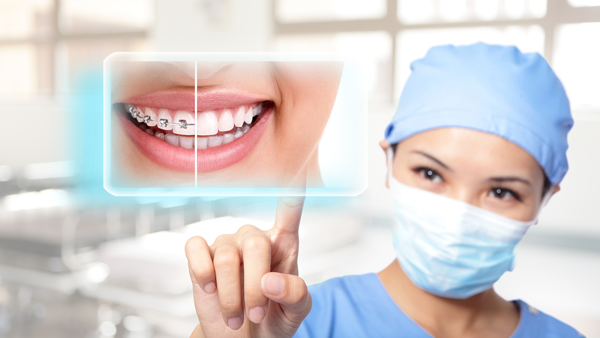Legacy Orthodontics - An Overview
Legacy Orthodontics - An Overview
Blog Article
8 Simple Techniques For Legacy Orthodontics
Table of ContentsExamine This Report about Legacy OrthodonticsThings about Legacy OrthodonticsThe Only Guide for Legacy OrthodonticsLegacy Orthodontics for DummiesHow Legacy Orthodontics can Save You Time, Stress, and Money.
In addition, we offer flexible treatment routines, flexible payment choices and an enjoyable, satisfying experience.An orthodontist is a dental practitioner educated to identify, stop, and treat teeth and jaw abnormalities. They remedy existing conditions and are educated to identify problems that might establish in the future. Orthodontists work with people of every ages, from children to adults. Individuals commonly connect a perfect smile with healthiness.
Malocclusion, or misaligned teeth, can lead to dental concerns, consisting of dental caries, periodontal condition, and challenging or unpleasant eating. But not everyone is birthed with straight teeth. If you have a negative bite or large spaces in between your teeth, you may intend to speak with a dental expert concentrating on orthodontic care.
Facts About Legacy Orthodontics Uncovered
( Image Credit Report: DigitalVision/Getty Images) Orthodontists utilize taken care of and detachable dental gadgets, like braces, retainers, and bands, to transform the placement of teeth in your mouth. Orthodontic treatment is for oral abnormalities, including: Uneven teethBite problems, like an overbite or an underbiteCrowded teeth or teeth that are too far apartJaw misalignmentThe objective of orthodontic treatment is to improve your bite.
A healthy and balanced bite guarantees you can eat, eat, and speak effectively. While you may consider orthodontists as mostly for kids or teenagers who need dental braces, they can correct dental problems at any type of age. Orthodontists attend university, dental institution, and orthodontic school. After graduation, they spend 2 or 3 years in an orthodontic residency program.
All orthodontists are dentists, however not all dentists are orthodontists. Orthodontic residency programs offer extensive, concentrated instruction for dental experts. They concentrate on two locations: Just how to appropriately and safely relocate teeth Just how to effectively lead development in the teeth, jaw, and faceOnce an orthodontist has actually finished training, they have the choice to come to be board accredited.
Getting My Legacy Orthodontics To Work
Imbalance, or malocclusion, is the most common factor people see an orthodontist. It is hereditary and is the result of dimension distinctions between the top and lower jaw or between the jaw and teeth. Malocclusion brings about tooth overcrowding, a twisted jaw, or irregular bite patterns. Malocclusion is normally treated with: Your orthodontist connects metal, ceramic, or plastic square bonds to your teeth.
If you have only minor malocclusion, you might have the ability to utilize clear braces, called aligners, as opposed to conventional dental braces (https://giphy.com/channel/legacyortho). Some individuals need a headwear to aid move teeth into line with pressure from outside the mouth. After braces or aligners, you'll click here for more require to put on a retainer. A retainer is a custom-made device that maintains your teeth in location.
They can produce extra room in the mouth without having to draw teeth. Orthodontists make use of cords, surgical screws, or plates to support your jaw bone.
You may require to see an orthodontist if you have: Crowding or not sufficient area for all of your teethOverbite, when your top teeth come over your bottom teethUnderbite, when your base teeth are also much forwardSpacing or issues with gapsCrossbite, which is when your top teeth fit behind your base teeth when your mouth is closedOpen bite or an upright gap in between your front base and upper teethMisplaced midline, when the facility of your base and top teeth don't align Remedying a dental malocclusion can: Make biting, chewing, and talking easierImprove the symmetry of our face and your overall appearanceEase pain from temporomandibular joint disordersSeparate your teeth and make them easier to clean, helping avoid tooth decay or cavities It's commonly a dental practitioner that first notices misaligned teeth throughout a routine examination.
Everything about Legacy Orthodontics

During your first orthodontic assessment, you'll likely have: A dental examPhotos taken of your face and smileDental X-raysPanoramic (360 level) X-rays of your face and headImpressions to develop mold and mildews of your teethThese tests will aid your orthodontist understand exactly how to wage your treatment. braces. An orthodontist is a dentist who's had training to treat your teeth and jaw
Orthodontists may do surgical procedure, exams,X-rays,and even more to aid you acquire an extra comfortable, much healthier smile. An orthodontist is concentrated on your bite, so something like a cracked tooth would be taken care of by a dental expert. Orthodontists are dentists however not all dental professionals are orthodontists. Orthodontists are concentrated on your bite, or the way your teeth meshed, and the straightness of your teeth.
Ever wondered how stars always appear to have completely aligned teeth? The response typically depends on the competent hands of an orthodontist. What precisely does an orthodontist do? Orthodontists are dental professionals who concentrate on remedying irregularities in the teeth and jaws. Their knowledge surpasses simply creating a beautiful smile; it reaches boosting your overall dental health and wellness and function.
An Unbiased View of Legacy Orthodontics

, orthodontists have a diverse toolkit at their disposal. These tried-and-true dental braces use a system of brackets bound to the teeth and connected by cables.
Clear aligners, like Invisalign, are a prominent option for patients looking for a much more very discreet therapy option. These removable trays are tailor-made to considerably shift the teeth's position. Headwear may be used in combination with dental braces or aligners to apply added targeted forces, particularly for fixing jaw inconsistencies. In cases of slim jaws, palatal expanders can be made use of to develop room for appropriate tooth alignment.
Report this page